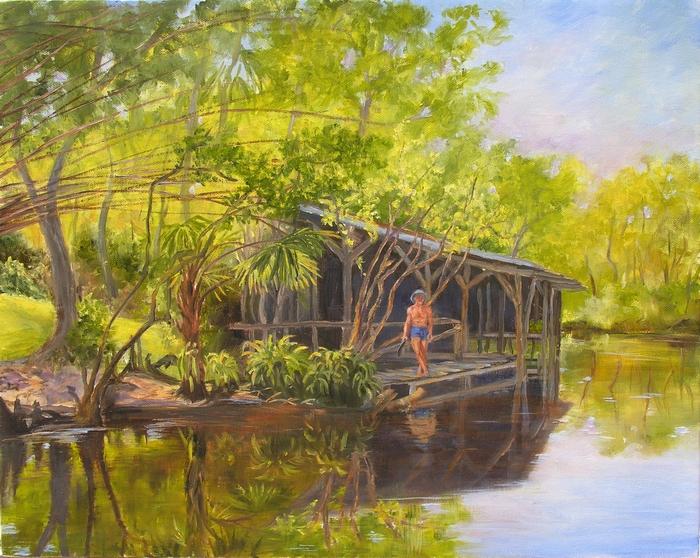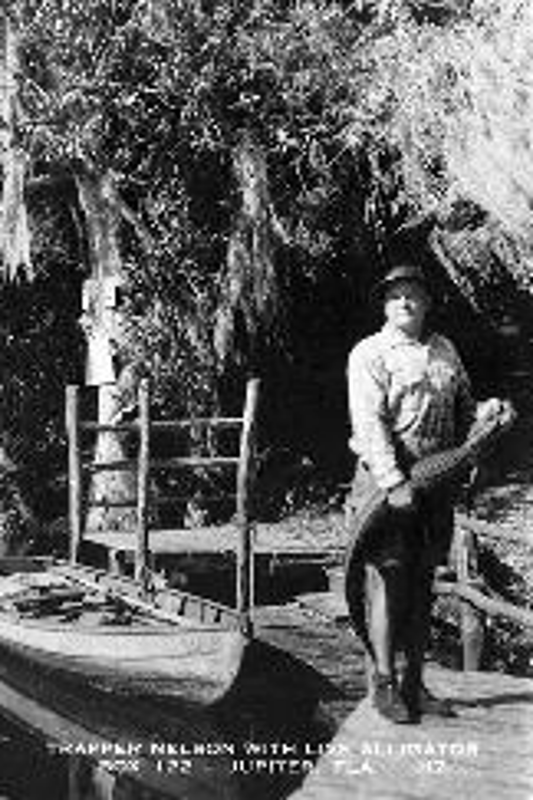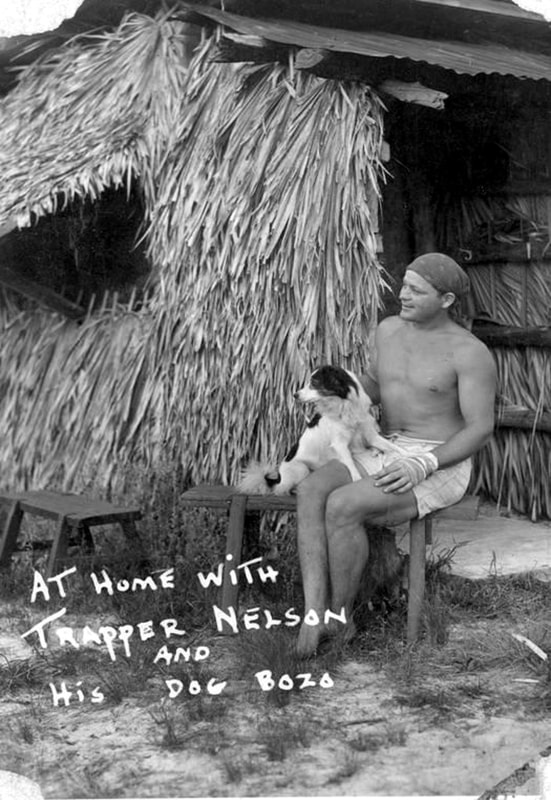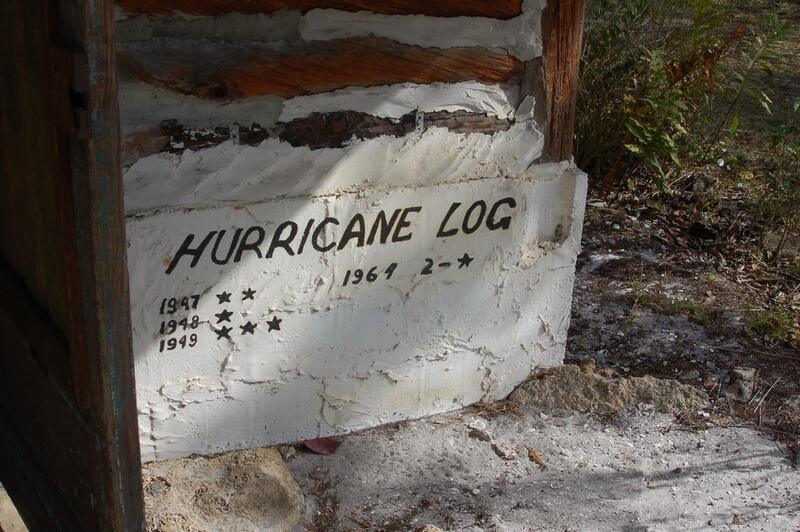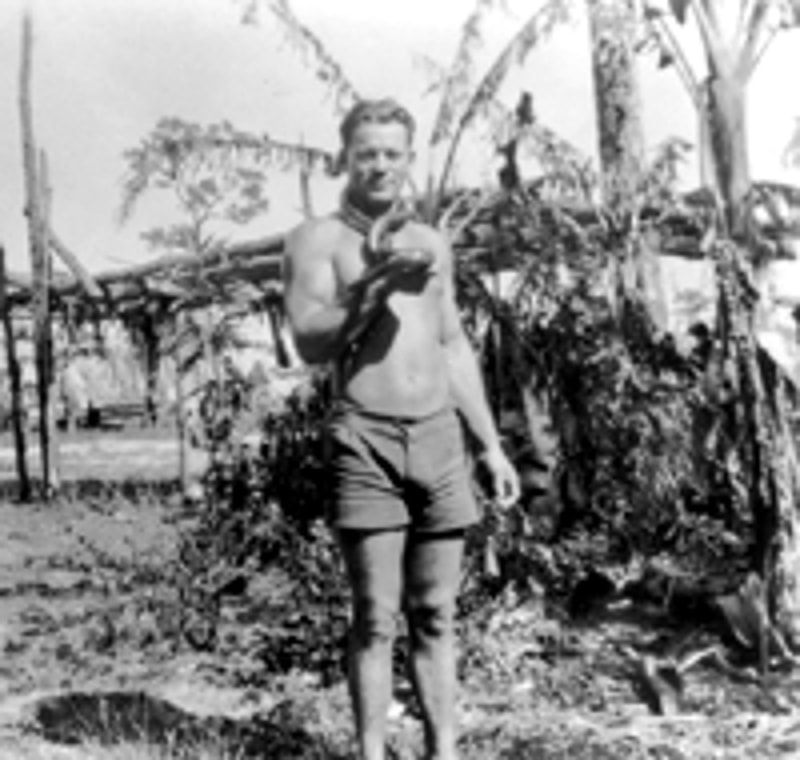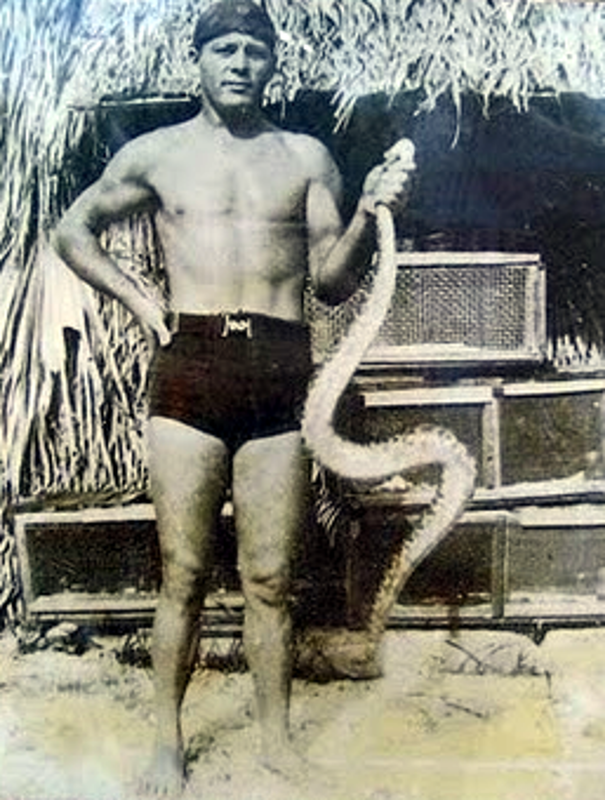Haunted Jonathan Dickinson State Park
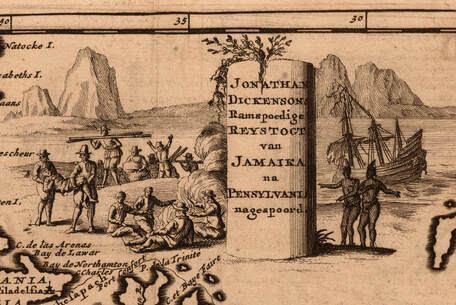 Detail from the front illustration of a Dutch translation of Jonathan Dickinson's journal c.1706 (Source - Brown University)
Detail from the front illustration of a Dutch translation of Jonathan Dickinson's journal c.1706 (Source - Brown University)
Jonathan Dickinson (1663-1722) was a wealthy Quaker merchant traveling from Jamaica to Philadelphia aboard the ship Reformation with his family. In October, 1696, a hurricane shipwrecked them on the Florida coast between Hobe Sound and Tequesta. They were robbed and attacked by Indians who set the ship on fire. They fled for their lives and arrived in St. Augustine two months later.
Dickinson afterward published an account of his experiences titled God's Protecting Providence which was reprinted 16 times, and in other languages besides English.
This historic 11,500 acre site located in Martin County was named after Jonathan Dickinson, and the park is close to where he landed on the coast.
Dickinson afterward published an account of his experiences titled God's Protecting Providence which was reprinted 16 times, and in other languages besides English.
This historic 11,500 acre site located in Martin County was named after Jonathan Dickinson, and the park is close to where he landed on the coast.
The Ghost of Trapper Nelson

Vince "Trapper" Nelson (born Vincent Natulkiewicz) was found dead on July 30, 1968, inside his chickee, from what appeared to be a self-inflicted gunshot wound to his stomach. He was a very interesting character, and larger than life both literally and figuratively as he measured 6'4" in height. It is the ghost of Trapper Nelson or the Tarzan of the Loxahatchee as he was also known, who is said to roam the Jonathan Dickinson State Park where he lived and established a wild life zoo which was shut down in the 1960s.
Vince “Trapper” Nelson’s story started far away in another state. He was born in either 1908 or 1909, to poor Polish parents in Trenton, New Jersey. While still a teenager, in order to escape an unhappy home life after his widowed father remarried, he left home with his step-brother Charles, and they hobo’d across the United States, riding the freight trains out west. They ended up in Mexico, and were jailed for allegedly gun-running but were eventually freed. They took to the rails again, and Nelson made money by gambling with the other bums. By the late 1920s, they stopped their wandering and set up camp in an area just north of Jupiter, Florida. By then his brother and him had changed their difficult to pronounce surname to Nelson.
Vince Nelson with his step-brother Charlie and a friend John Dykas, hunted and trapped animals. This partnership came to an abrupt end on December 17, 1931, when Charles Nelson shot John Dykas in the back with a shotgun after an argument. Trapper ended up testifying against his brother even though he was absent when the murder took place. Charlie was sentenced to life imprisonment at Raiford Prison by Judge C. E. Chillingworth (1896-1955). He was paroled in the 1950s, just in time to be briefly considered a suspect in the killing of Judge Chillingworth who was a friend of his brother. The judge and his wife Marjorie were last seen on June 14, 1955. The reason he became a suspect was because on the day he was sentenced, he threatened to come back and kill Trapper and the judge.
It turned out, Chillingworth was killed by the henchmen of Judge Joseph Peel who faced disbarment for using his position to protect moonshiners and bolita operators by warning them of impending raids. He had hopes of running for governor, but if disbarred he faced the end of his political aspirations. Chillingworth as a senior judge had reprimanded Peel for unethical conduct in a divorce case.
Later it was found that Peel hired Floyd "Lucky" Holzapfel and Bobby Lincoln an accomplice, who kidnapped the judge and his wife from their home, which had a beach behind it. The couple were taken out, and were thrown overboard after lead weights were strapped to their legs. It wasn't until 1960 that Holzapfel was tricked into a confession. Eventually he charged, prosecuted and found guilty of the murder. His death sentence was commuted in 1966, and he died behind bars 30 years later. Peel was convicted of accessory to murder in 1961, and was paroled in 1982 after receiving a two life sentences. He died 9 days later from cancer. Lincoln finished his federal prison term in Michigan in 1962.
Vince “Trapper” Nelson’s story started far away in another state. He was born in either 1908 or 1909, to poor Polish parents in Trenton, New Jersey. While still a teenager, in order to escape an unhappy home life after his widowed father remarried, he left home with his step-brother Charles, and they hobo’d across the United States, riding the freight trains out west. They ended up in Mexico, and were jailed for allegedly gun-running but were eventually freed. They took to the rails again, and Nelson made money by gambling with the other bums. By the late 1920s, they stopped their wandering and set up camp in an area just north of Jupiter, Florida. By then his brother and him had changed their difficult to pronounce surname to Nelson.
Vince Nelson with his step-brother Charlie and a friend John Dykas, hunted and trapped animals. This partnership came to an abrupt end on December 17, 1931, when Charles Nelson shot John Dykas in the back with a shotgun after an argument. Trapper ended up testifying against his brother even though he was absent when the murder took place. Charlie was sentenced to life imprisonment at Raiford Prison by Judge C. E. Chillingworth (1896-1955). He was paroled in the 1950s, just in time to be briefly considered a suspect in the killing of Judge Chillingworth who was a friend of his brother. The judge and his wife Marjorie were last seen on June 14, 1955. The reason he became a suspect was because on the day he was sentenced, he threatened to come back and kill Trapper and the judge.
It turned out, Chillingworth was killed by the henchmen of Judge Joseph Peel who faced disbarment for using his position to protect moonshiners and bolita operators by warning them of impending raids. He had hopes of running for governor, but if disbarred he faced the end of his political aspirations. Chillingworth as a senior judge had reprimanded Peel for unethical conduct in a divorce case.
Later it was found that Peel hired Floyd "Lucky" Holzapfel and Bobby Lincoln an accomplice, who kidnapped the judge and his wife from their home, which had a beach behind it. The couple were taken out, and were thrown overboard after lead weights were strapped to their legs. It wasn't until 1960 that Holzapfel was tricked into a confession. Eventually he charged, prosecuted and found guilty of the murder. His death sentence was commuted in 1966, and he died behind bars 30 years later. Peel was convicted of accessory to murder in 1961, and was paroled in 1982 after receiving a two life sentences. He died 9 days later from cancer. Lincoln finished his federal prison term in Michigan in 1962.
 Vincent "Trapper" Nelson
Vincent "Trapper" Nelson
After Charlie’s conviction, Trapper who was 24 years old, found himself without money and partners. After returning to Trenton, New Jersey for a year and working on a dairy farm he returned to South Florida.
He retreated deeper into the woods, and kept trapping animals and selling furs and pelts. He took over an abandoned hunter’s cabin which sat on land which could only be accessed by boating up the river. It was during these years of the Great Depression that he was able to buy large tracts of acreage which went up for sale at tax auctions.
Tourists from West Palm Beach eventually wound up at his camp, and initially he showed visitors around for free, but realizing there was money to be made he started Trapper Nelson’s Zoo and Jungle Garden. He sold souvenirs and let the visitors see all the wildlife he kept caged on the grounds. He lived the frontier life without any running water or electricity, and ate the animals he trapped, however he knew that tourists would appreciate some niceties and he set up picnic tables, cabins and grills. He became quite a celebrity, known as the Wildman of the Loxahatchee, and his zoo became a regular stop for tour boats. Movie stars including Gary Cooper visited Trapper Nelson’s camp. Trapper also romanced the West Palm Beach socialites who were smitten with the strapping wild man who wrestled alligators.
He retreated deeper into the woods, and kept trapping animals and selling furs and pelts. He took over an abandoned hunter’s cabin which sat on land which could only be accessed by boating up the river. It was during these years of the Great Depression that he was able to buy large tracts of acreage which went up for sale at tax auctions.
Tourists from West Palm Beach eventually wound up at his camp, and initially he showed visitors around for free, but realizing there was money to be made he started Trapper Nelson’s Zoo and Jungle Garden. He sold souvenirs and let the visitors see all the wildlife he kept caged on the grounds. He lived the frontier life without any running water or electricity, and ate the animals he trapped, however he knew that tourists would appreciate some niceties and he set up picnic tables, cabins and grills. He became quite a celebrity, known as the Wildman of the Loxahatchee, and his zoo became a regular stop for tour boats. Movie stars including Gary Cooper visited Trapper Nelson’s camp. Trapper also romanced the West Palm Beach socialites who were smitten with the strapping wild man who wrestled alligators.
 Trapper Nelson visiting Jupiter
Trapper Nelson visiting Jupiter
War raged in Europe during these years, and eventually WWII got in the way of Trapper's best laid plans. In 1942, he married waitress Lucille Gee to avoid the draft, which didn’t work because he was drafted anyway. After tearing a leg muscle while training in Texas he returned to Florida, and found Lucille was cheating on him. They divorced and she went on to marry four more times. He was posted to Camp Murphy right next to where he lived and served as an MP. After the end of the war, he became more of a recluse.
By the 1950s, Trapper Nelson had bought more land, but had also grown more mistrustful of strangers and the government. Health inspectors insisted he had to install bathrooms at the camp, and he did so, but not to the satisfaction of the inspector who in 1960, forced him to close his zoo. His source of income dried up and he was forced to borrow money in order to pay the taxes on all the land he owned. He discouraged visitors coming to the camp and posted signs warning them away as well as always carrying a 12 gauge shotgun with him.
By the 1950s, Trapper Nelson had bought more land, but had also grown more mistrustful of strangers and the government. Health inspectors insisted he had to install bathrooms at the camp, and he did so, but not to the satisfaction of the inspector who in 1960, forced him to close his zoo. His source of income dried up and he was forced to borrow money in order to pay the taxes on all the land he owned. He discouraged visitors coming to the camp and posted signs warning them away as well as always carrying a 12 gauge shotgun with him.
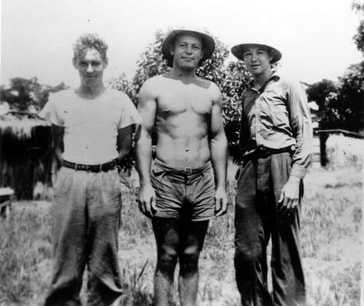 Trapper Nelson with unknown men
Trapper Nelson with unknown men
During these years he developed stomach pains, but his distrust also extended to physicians. He wouldn’t go seek out medical help, even though by the time he died an acquaintance claimed that a doctor had prescribed painkillers for him.
Friends had to let him know ahead of time if they would be visiting, otherwise they would only see him once per week when he came to town to pick up mail at the post office.
In July 1968, he failed to show up for a meeting with a friend John Dubois. Dubois came to the camp and found Trapper dead from a shotgun blast to his stomach area. Eventually his death was ruled a suicide, but the locals felt dismayed that foul play was so easily dismissed. He had other trappers in the area that he didn’t get along with, and there were others who wanted his land. In other words he had enemies, including his step-brother Charles who had promised retribution when he was sentenced for killing John Dykas.
Eventually in 1970, the State of Florida paid $1.3 million to his nephew in order to purchase 857 acres of Trapper’s properties, and add it to Jonathan Dickinson State Park. Trapper’s ashes were scattered on the Loxahatchee River.
Friends had to let him know ahead of time if they would be visiting, otherwise they would only see him once per week when he came to town to pick up mail at the post office.
In July 1968, he failed to show up for a meeting with a friend John Dubois. Dubois came to the camp and found Trapper dead from a shotgun blast to his stomach area. Eventually his death was ruled a suicide, but the locals felt dismayed that foul play was so easily dismissed. He had other trappers in the area that he didn’t get along with, and there were others who wanted his land. In other words he had enemies, including his step-brother Charles who had promised retribution when he was sentenced for killing John Dykas.
Eventually in 1970, the State of Florida paid $1.3 million to his nephew in order to purchase 857 acres of Trapper’s properties, and add it to Jonathan Dickinson State Park. Trapper’s ashes were scattered on the Loxahatchee River.
 Trapper Nelson in his youth when traveling in the Southwest c.1920s
Trapper Nelson in his youth when traveling in the Southwest c.1920s
Like many ghost stories, it’s hard to pinpoint when paranormal activity is actually experienced by the living and when it started, but it is much more difficult when the location is a secluded state park. In 1994, a female park ranger said that she didn’t see anything but heard him trying to flirt with her and that he patted her on the rear. Two men who canoed to Trapper’s cabin was struck by an unseen person, and others have claimed to see him waving from the dock of his encampment.
Rose Watson, a local resident from the area, lives on the dirt road which Trapper used when he would come in for supplies, and claims she has seen him several times. As a small child she would accompany her brother, who was 20 years her senior, to visit Trapper. She claims she saw Trapper outside the rear sliding glass door of her home, trying to look in through the glass. She also heard the sound of footsteps on the path he used for so many years.
Other witnesses claim that Trapper Nelson’s ghost points the finger at his brother Charlie as his killer. Others describe where he warns visitors away from the Native American burial grounds.
Campers describe inexplicable noises from the underbrush as if someone is walking through it, and the sound of far away voices. This has happened close to Trapper’s old cabin, and many claim this is Trapper Nelson checking on his traps.
Throughout the years after Trapper's death I am sure that many people had paranormal experiences, which they just couldn’t account for. They probably decided not to talk about their experiences, especially if they got a good scare.
It’s also important to remember that the area where Trapper John lived on also had it’s own rich history, such as the Battle of Jupiter Inlet which occurred on January 15, 1838, between the Seminole Indians, Seminole Negro and the United States Navy, which could cast another layer of ghostly encounters.
The reason for his haunting could be that he was murdered as many of the locals claimed instead of committing suicide. He could also be guarding his treasure which park rangers found in April 1984, inside a hiding place in the chimney of his home. Inside were 5,005 coins totaling more than $1,800. The coins ranged in date from the 1890s to the 1960s. The land he owned at the time of his death was worth more than $1 million. No other treasures were ever found, so the mystery remains as to why Trapper Nelson is tied to the land he loved so much.
Rose Watson, a local resident from the area, lives on the dirt road which Trapper used when he would come in for supplies, and claims she has seen him several times. As a small child she would accompany her brother, who was 20 years her senior, to visit Trapper. She claims she saw Trapper outside the rear sliding glass door of her home, trying to look in through the glass. She also heard the sound of footsteps on the path he used for so many years.
Other witnesses claim that Trapper Nelson’s ghost points the finger at his brother Charlie as his killer. Others describe where he warns visitors away from the Native American burial grounds.
Campers describe inexplicable noises from the underbrush as if someone is walking through it, and the sound of far away voices. This has happened close to Trapper’s old cabin, and many claim this is Trapper Nelson checking on his traps.
Throughout the years after Trapper's death I am sure that many people had paranormal experiences, which they just couldn’t account for. They probably decided not to talk about their experiences, especially if they got a good scare.
It’s also important to remember that the area where Trapper John lived on also had it’s own rich history, such as the Battle of Jupiter Inlet which occurred on January 15, 1838, between the Seminole Indians, Seminole Negro and the United States Navy, which could cast another layer of ghostly encounters.
The reason for his haunting could be that he was murdered as many of the locals claimed instead of committing suicide. He could also be guarding his treasure which park rangers found in April 1984, inside a hiding place in the chimney of his home. Inside were 5,005 coins totaling more than $1,800. The coins ranged in date from the 1890s to the 1960s. The land he owned at the time of his death was worth more than $1 million. No other treasures were ever found, so the mystery remains as to why Trapper Nelson is tied to the land he loved so much.
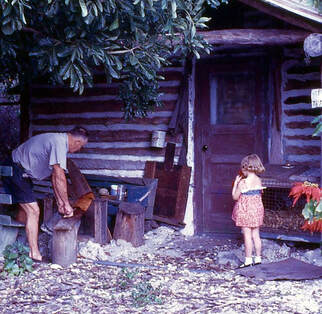 Trapper Nelson with his niece Cyndy c.1965 (Source - Cyndy Tomassetti)
Trapper Nelson with his niece Cyndy c.1965 (Source - Cyndy Tomassetti)
The following is an email received from Trapper Nelson's family (2023):
Hi Marlene,
I am Trapper’s grandniece, and I did know my uncle when he was alive. My father, Philip Celmer was the heir and executor of the will who sold Trapper’s land to the state. I came across your blog on the Friends of Jonathan Dickinson State Park. While the blog is generally accurate, it does have some inconsistencies. My great grand parents, on my father’s mother side (Vince’s sister, Marcie) were Lithuanian, not Polish. They emigrated (with my grandmother) from Vilnius, Lithuania in the late 1800s. I have their records. They did live in Trenton, NJ, and most were employed in the potteries. My grandfather, Vince’s brother-in-law, was Polish, but not the Natulkiewiczs.
Vince most likely had prostate cancer. When I last saw him, about two weeks before his death, he could only urinate with a catheter. He told me he was sick. He had released the animals in the zoo because he was afraid he would not be able to feed or water them. The family never entertained foul play.
My brother, who spent every summer of his childhood through his 24th year at Vince’s camp also confirms it is not Vince.
I am pictured below with Vince at camp, probably in 1965.
Cyndy
Hi Marlene,
I am Trapper’s grandniece, and I did know my uncle when he was alive. My father, Philip Celmer was the heir and executor of the will who sold Trapper’s land to the state. I came across your blog on the Friends of Jonathan Dickinson State Park. While the blog is generally accurate, it does have some inconsistencies. My great grand parents, on my father’s mother side (Vince’s sister, Marcie) were Lithuanian, not Polish. They emigrated (with my grandmother) from Vilnius, Lithuania in the late 1800s. I have their records. They did live in Trenton, NJ, and most were employed in the potteries. My grandfather, Vince’s brother-in-law, was Polish, but not the Natulkiewiczs.
Vince most likely had prostate cancer. When I last saw him, about two weeks before his death, he could only urinate with a catheter. He told me he was sick. He had released the animals in the zoo because he was afraid he would not be able to feed or water them. The family never entertained foul play.
My brother, who spent every summer of his childhood through his 24th year at Vince’s camp also confirms it is not Vince.
I am pictured below with Vince at camp, probably in 1965.
Cyndy
